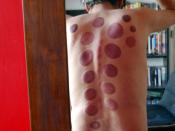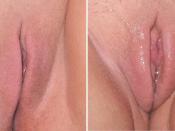The central features of all paraphilias, according to the DSM-IV, are:
Sexual urges or sexual fantasies with non-human objects and/or sexual behaviors with non-human objects
Sexual behaviors involving humiliation or suffering of oneself or another person
Adult sexual behavior that involves children or nonconsenting adults
There are two types of preferences for nonhuman objects: fetishism and transvestism. A fetish exists when a nonliving object sexually arouses a person. It is relatively harmless if the action is taken playfully and is acceptable to the person's partner. Focus on certain parts of the body (feet, hair, ears, etc) or certain objects (woman's panties) aside from those part of the pleasurable foreplay, can become fetishistic in its grip on the individual. A more extreme form of fetishism is when a nonliving object completely substitutes for a human partner and orgasm is achieved when the person is alone, fondling the object.
Transvestism exists when the person achieves sexual excitement by cross-dressing.
This is very rarely found in females, so I will use the male side of this paraphilia as the example. Two different purposes seem to be associated with this act in different individuals. In one aspect, the person seeks to intensify sexual excitement in intercourse with a partner by only partially dressing as a woman. In the other form, the male completely dresses as a woman, which suggests some type of gender identity problem, but not necessarily homosexuality.
Sadism and Masochism are examples of preferences for situations causing suffering or humiliation. The term 'sadist' is derived from the reported violent sexual exploits of the Marquis de Sade. Sadist is applied to those who obtain sexual excitement from the pain of others. The term masochist was derived from the writing of Leopold von Sacher-Masoch, whose characters sought out women who would beat them. "Masochist"...


